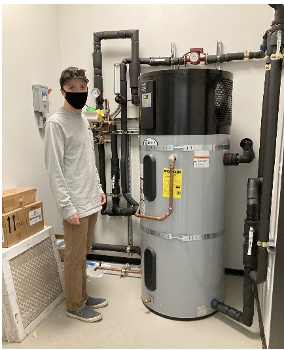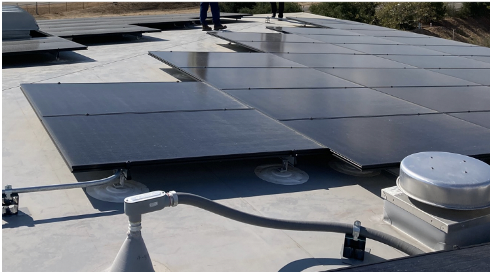We all know that carbon emissions are at the root of climate change. Operational carbon (from the energy used to operate a building) has been dropping for a decade or more. But what of the carbon that is emitted during the manufacturing of materials and actual construction of that building?
Unlike a utility bill that quantifies the electricity or gas used in a month, our buildings don’t generally come with labels showing the carbon emissions incurred before we even step foot inside. This embodied carbon (EC) is knowable however – via a document called an EPD, or environmental product declaration.
EPDs can take many forms and may include information beyond just carbon emissions, such as data about the manufacturing process, sourcing, and other environmental measures. Importantly, they provide third-party verified data that can be used to compare the EC in products in a standardized “apples-to-apples” platform.
The simplest way to use EPDs is to compare the EC data for “Stages A1-A3” of a product, which include extraction, upstream transport, and manufacturing. (“Stages” is the term used in a full Life Cycle Analysis, from manufacture to use to end-of-life.) This comparison is often done during conceptual or schematic design to inform broad decisions about structural materials.
Data from a manufacturer’s EPD showing Global Warming Potential in kg CO2 equiv.
EPDs can be found on manufacturer websites, if they’ve gone to the trouble of generating them. Here, we show a section of an EPD for 1 meter of I-Joist material. The embodied carbon is listed for stages A1-A3 and equals 1.82 kg CO2 equivalent.
This same data is also accessible in a variety of searchable databases. The EC3 Tool (below) is generally limited to data for stages A1-A3, while others offer data for the full life cycle. Here, we found the EC data for the same I-joist product and were able to compare it against other products in the same category.
EPD data for the same I-joist manufacturer as above and a competitor, compiled in the EC3 searchable database.
On a recent project, we conducted a simple EC analysis during the conceptual design phase. Starting with foundation, structure, and enclosure materials, we identified the industry baseline EC for a building of the same size, structure, and use. We then researched the embodied carbon content of products that would likely be specified for the project, as well as alternative products that would be readily available. With this information in hand, we were able to generate a rough estimate of potential EC savings in the proposed design.
In the case of structural wood for example, we were able to identify two manufacturers that could provide LVLs of the specified size and strength. Both reported EC below the industry baseline of 400 kg CO2 per m3. However, one was significantly lower than the other – a 31% reduction vs. 55%. This then informed the project team’s specifications moving into design development and ultimately contributing to a Zero Carbon certification on the horizon.
Interested in reducing the embodied carbon in your next project? Contact us!








